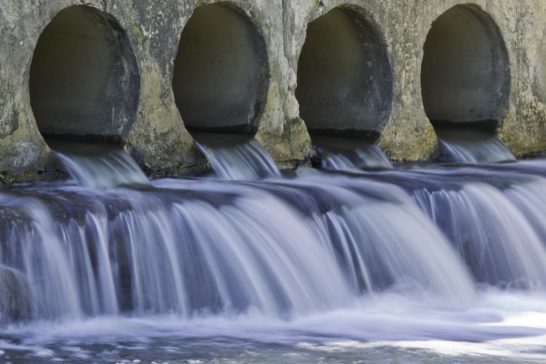Storm Water Management Is Vital to Maintaining Healthy Communities
Whenever it rains or when snow starts melting, you probably don’t give a second thought about where all that water goes. The truth is that this water, more technically known as “storm water runoff,” if not managed properly, can lead to expensive damage and widespread catastrophe to both urban and rural areas.
What’s storm water runoff, anyway?
Runoff pertains to the snowmelt or rain that flows over the land surface and not absorbed by the soil. Due to the addition of parking lots, roads, driveways, rooftops, and other surfaces, the water is prevented from soaking into the ground. In turn, all that water with nowhere to go greatly increases the volume of runoff during storms.
Without proper management, this storm water runoff is carried into local lakes, streams, rivers and wetlands, eventually causing erosion and flooding. It can also wash away the natural habitat of various animals. Not only this, but storm water runoff can also carry with it many pollutants that can be found on road surface such as metals, pesticides, bacteria, sediment, grease and oil, pesticides, nitrogen, trash and phosphorous.
The Importance of Soil Water Management
In the face of all of these serious consequences, it is imperative to manage storm water properly to so that local communities and inhabitants can avoid suffering even after snowmelt and rain. Storm water management helps prevent the flooding of inhabited rural or urban areas. It also inhibits the erosion of precious agricultural land. Now more than ever, stormwater management has become truly essential due to the recent results of climate change studies. Legislative requirements and controls are now stepping into action to ensure improved practices of managing stormwater runoff as well as applying Sustainable Urban Drainage Systems.
The Role of Structural Engineers
Fortunately, entities such as structural engineering firms are working hard to ensure that stormwater runoff is managed effectively. For instance, you’ve got permeable pavements that allow water to safely soak through. Green roofing is also another excellent method that helps the environment, manages runoff and even prolongs roof life. There’s also Environmental Site Design (ESD) that aims to mimic natural systems to accommodate the path of storm water by replicating natural hydrology. No matter which of these is applied, the goals are the same— to keep communities safe and thriving through efficient management of storm water runoff.
Source:
EPA Facility Stormwater Management, epa.gov












